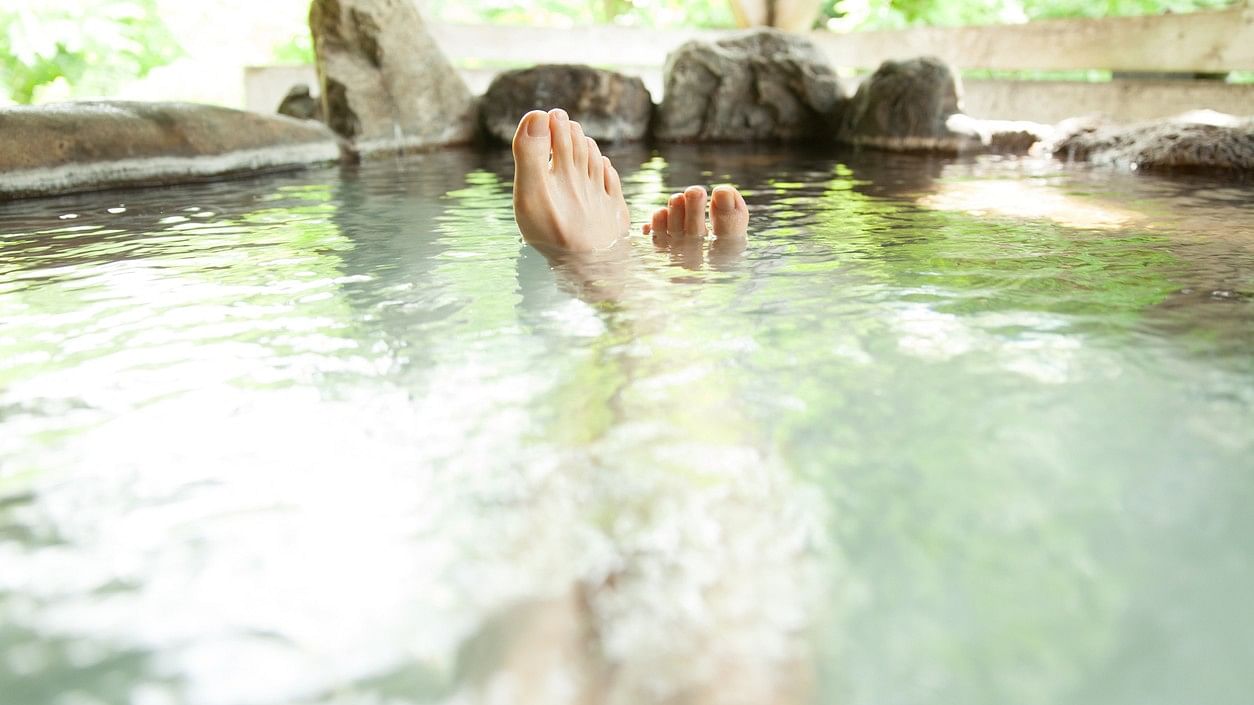
Representative image of hot spring.
Credit: iStock Photo
In India and several other Asian countries, public bathing in holy rivers and temple pools is a cherished tradition, often considered a daily ritual by locals and a must-do experience for tourists. Similarly, around the world, various cultures have their own favourite public bathing practices that hold significant cultural and social value.
Japan: Onsens
Japan, with its volcanic landscape, is home to numerous hot springs known as onsens, which are an integral part of the daily life of many Japanese people. Onsen etiquette includes showering before entering the communal baths, where nudity is the norm, and only a small towel is allowed for modesty. These mineral-rich waters offer relaxation and rejuvenation, making onsens a beloved cultural practice.
Finland: Saunas
Finland is credited as the birthplace of saunas, where steam baths are a popular way to relax and unwind. Sauna rooms, often made of wood, are heated to 80-110 degrees Celsius using electric or wood stoves. Finns have a strong affinity for saunas, with many homes, workplaces, and even the parliament having saunas. The sauna experience typically ends with a refreshing cold shower or a dip in a nearby chilled lake.
Turkey: Hammams
Hammams, or Turkish baths, are renowned for their cleansing properties and unique bathing rituals. Attendees are vigorously scrubbed to remove dead skin and impurities, followed by a series of stages including sauna, dry scrub, and thorough soap scrub. Hammams offer a deep sense of cleanliness and relaxation, unlike any other bathing experience.
Italy: Roman Baths
Italy boasts a rich Roman bathing culture, with ancient bathing complexes that are architectural marvels. These baths, popular in the 18th century for their therapeutic properties, involve attending staff who assist with scrubbing and oiling the body. Roman baths are known for their grandeur and historical significance, attracting visitors from around the world.
Israel/Jordan: Dead Sea
mud bath
At the Dead Sea, located between Israel and Jordan, visitors indulge in mud baths for their rich mineral content, which is believed to nourish and cleanse the skin. People cover themselves in mud and let it dry before rinsing off in the sea’s salty water. This unique bathing experience, coupled with the ability to float effortlessly in the Dead Sea, makes it a popular destination for tourists seeking relaxation and skincare benefits. Across these diverse cultures, public baths serve as social hubs where strangers often become friends. The shared experience of bathing fosters meaningful connections and memorable interactions, highlighting the universal appeal of these cultural traditions.